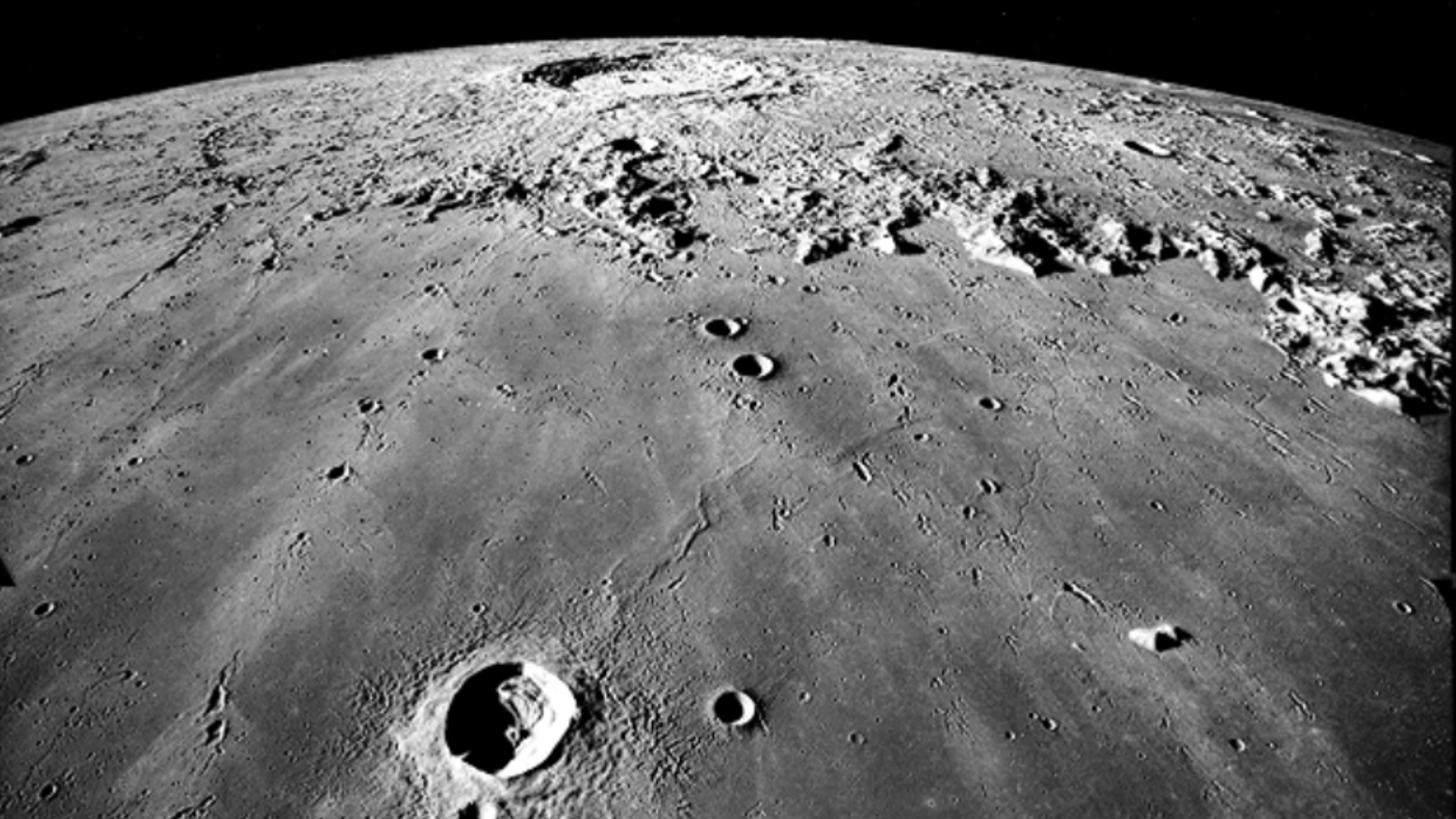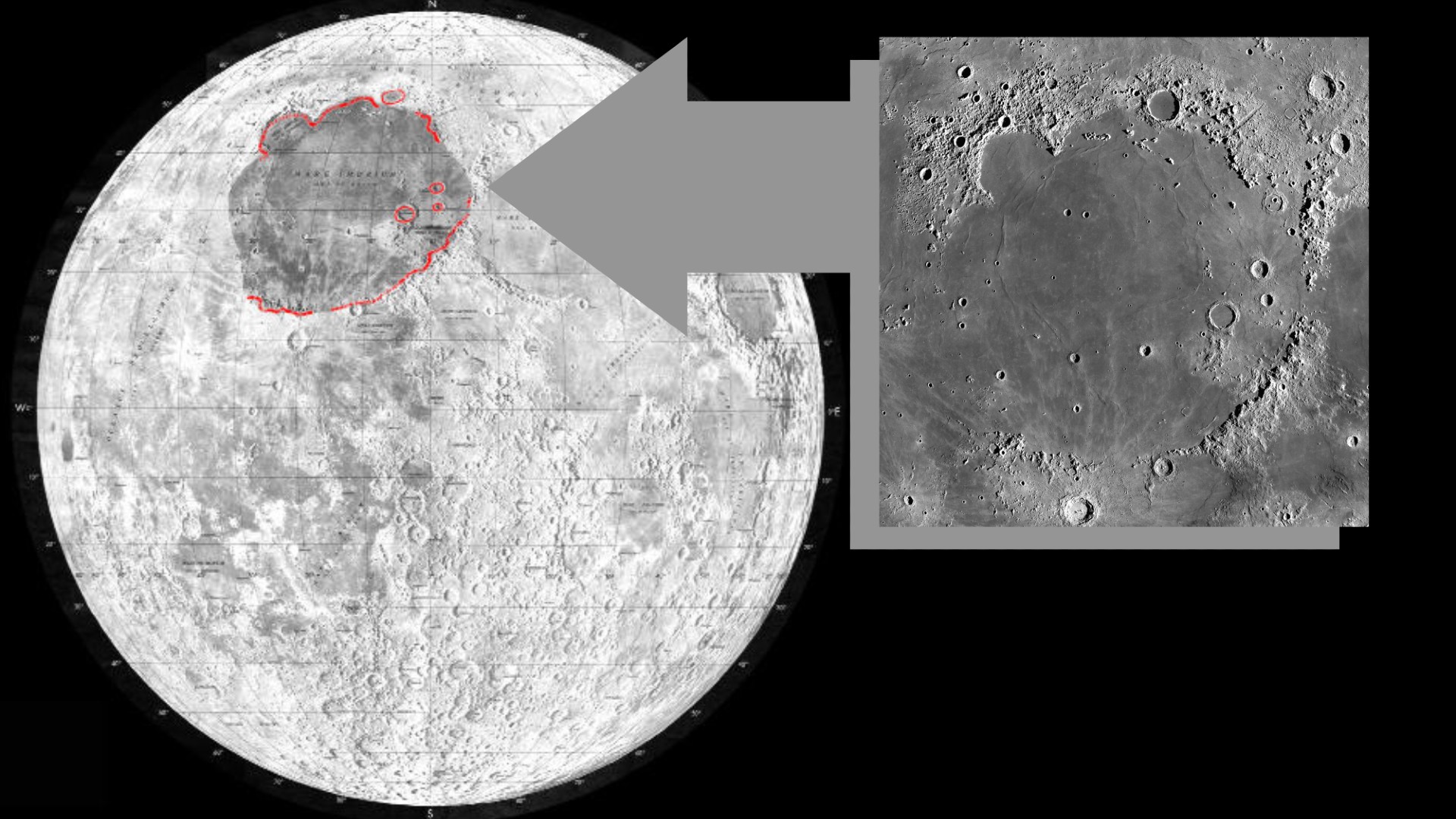Famous 'man in the moon' could be 200 million years older than we thought
The new dating system doesn't change estimates of the moon's age as a whole, which remains around 4.53 billion years.

The "Man in the Moon" is older than we thought.
Scientists have proposed resetting the lunar clock after reassessing impact craters on the surface of the moon. This means that some features of the moon, like the formation that makes up the face of the "Man in the Moon" formation could be 200 million years older than previously theorized.
The new dating system could help to better tell the story of the evolution of the lunar surface and has important implications for our understanding of the violent and turbulent early history of the solar system during which bodies like Earth and the moon were subject to intense bombardment by space rocks.
Related: The moon: Everything you need to know about Earth's companion
The new evaluation involved reexamining two separate ways of dating the lunar surface: Counting the number of craters caused by the impact of space rocks; and the assessment of moon rocks collected by the Apollo missions. These two dating methods have traditionally given different results, especially for the ages of the heavily cratered and mountainous highlands of the moon.
"We decided that we had to reconcile these differences, and that meant correlating individually dated Apollo samples to the number of craters in the sample site surrounding area — in effect, resetting the crater clock,' Centre for Planetary Habitability, University of Oslo, professor Stephanie Werner said during a talk at the Goldschmidt Geochemistry Conference in Lyon. "We also correlated them against spectroscopy data from various moon missions, especially the Indian Chandrayaan-1, to be sure which Apollo sample belongs to the surface in which we counted craters."
Like the moon, Earth also experienced a large number of impacts by space rocks during the turbulent early years of the solar system, but a similar crater-counting dating method wouldn't work on our planet. That's because geological processes like the shifting of tectonic plates have masked its impact record.
Get the Space.com Newsletter
Breaking space news, the latest updates on rocket launches, skywatching events and more!
The moon, on the other hand, is fairly geologically inactive, and that means that rather than being eroded away, the record of the impacts it has experienced is frozen into the lunar surface.
"Looking at the signs of these impacts on the moon shows what Earth would be like without the geological churning of plate tectonics which took place here on Earth," Werner said. "What we have done is to show that large portions of the lunar crust are around 200 million years older than had been thought."
A lunar clock reset with a big impact
The team behind the findings explains that the new dating system doesn't change estimates of the moon's age as a whole, which remains around 4.53 billion years. Instead, it changes the age of all areas of the moon's surface but not in a uniform way; the new dating system suggests older areas are subject to the greatest shift in age due to the new system.
An example of the extreme age differences discovered by Werner and colleagues can be seen in the 712-mile (1146 kilometers) wide Imbrium Basin, an ancient impact site that is believed to have been created when an asteroid the size of New Jersey hit the moon at some point in its distant past. The basin was filled with impact debris and volcanic materials after its formation, which created a vast lava plain called the Mare Imbrium.

Previous estimates had placed the age of the asteroid impact at around 3.9 billion years, but the team's results pushed the strike and the creation of the Imbrium Basin back 200 million years to 4.1 billion years ago.
"This is an important difference. It allows us to push back in time an intense period of bombardment from space, which we now know took place before extensive volcanic activity that formed the 'Man in the moon' patterns — the mare volcanic plains, including Mare Imbrium," Werner said. "As this happened on the moon, the Earth was almost certain to have also suffered this earlier bombardment too."
University of Bayreuth researcher Audrey Bouvier was not involved in the work, but she explained how the moon provides unique records of the early bombardment history in the solar system and how this dating change could cause a rethink of our understanding of planetary evolution.
"Such a heavy bombardment period must have affected the origin and early evolution of life on Earth and potentially other planets such as Mars," Bouvier said in a statement. "Bringing back rock samples from Jezero Crater on Mars will be the next giant leap forward to search for signs of ancient life on another planet in the solar system, and when."
The team's research was presented at the Goldschmidt Conference held in Lyon, France, between July 9 and July 14. It has been accepted for publication in the Planetary Science Journal.
Join our Space Forums to keep talking space on the latest missions, night sky and more! And if you have a news tip, correction or comment, let us know at: community@space.com.

Robert Lea is a science journalist in the U.K. whose articles have been published in Physics World, New Scientist, Astronomy Magazine, All About Space, Newsweek and ZME Science. He also writes about science communication for Elsevier and the European Journal of Physics. Rob holds a bachelor of science degree in physics and astronomy from the U.K.’s Open University. Follow him on Twitter @sciencef1rst.









